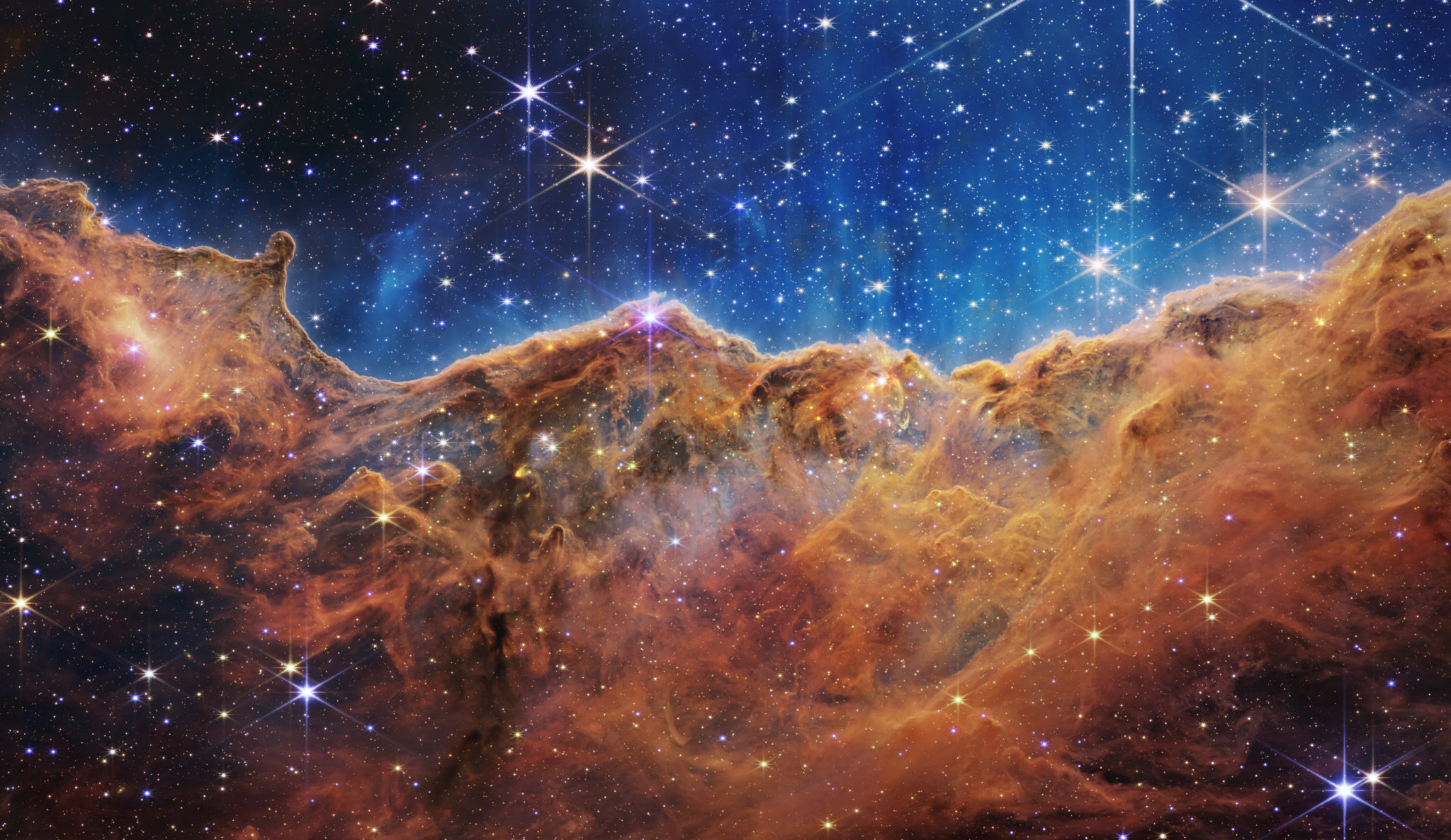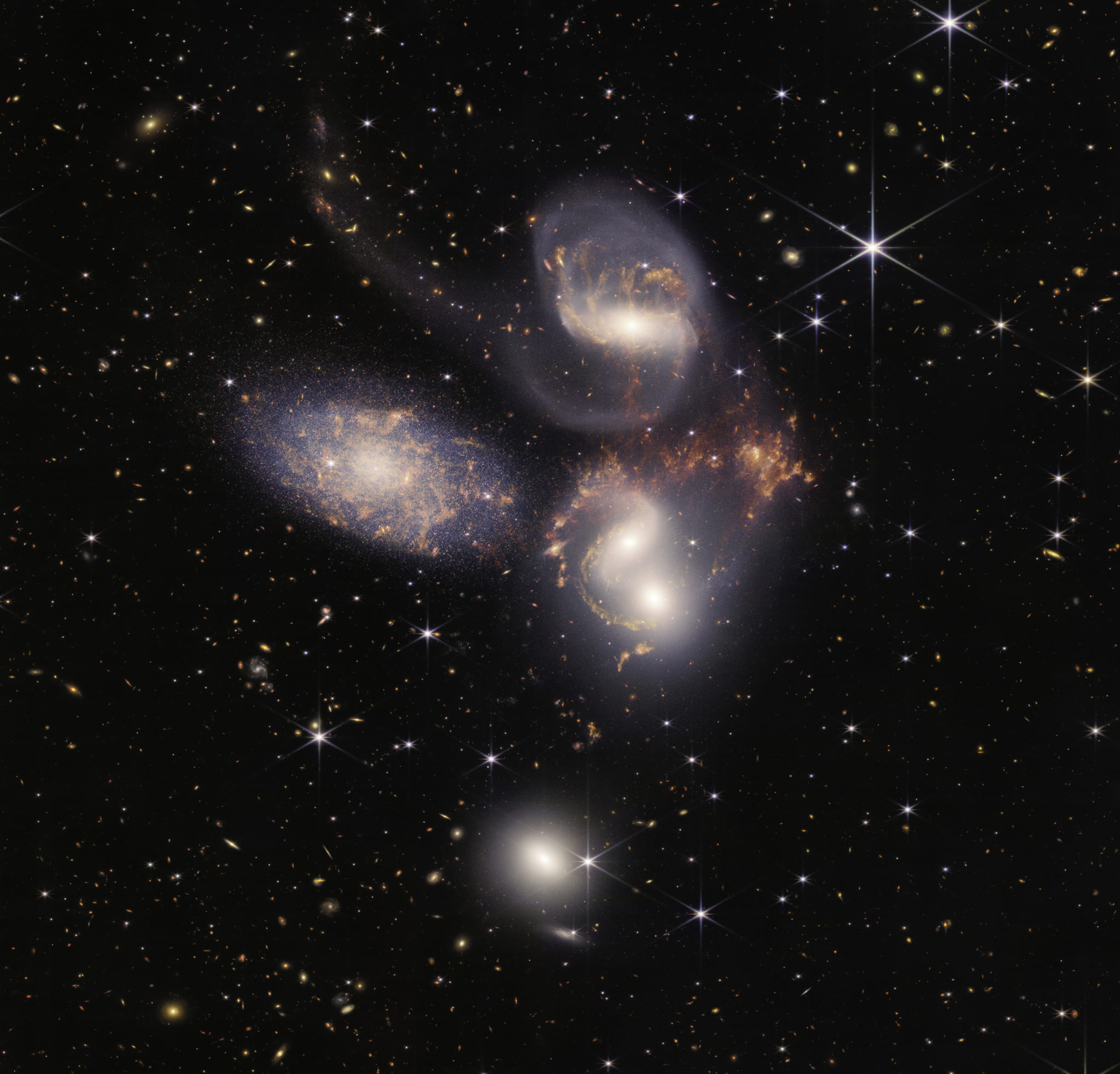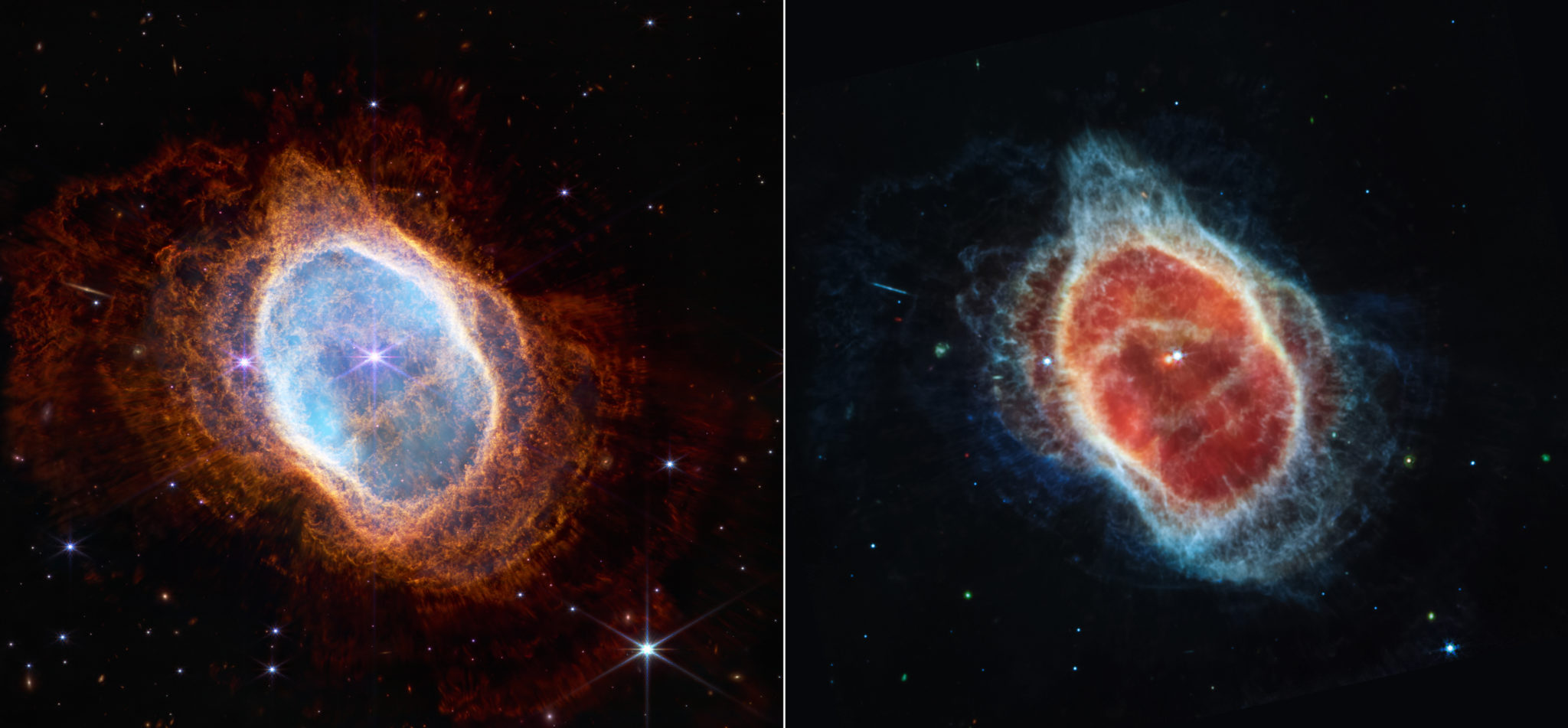The first full-colour images and data from the James Webb Space Telescope have been released.
It has delivered the deepest and sharpest infrared image of the distant universe so far.
NASA says its First Deep Field is galaxy cluster SMACS 0723, which is "teeming with thousands of galaxies" - including the faintest objects ever observed in the infrared.
It's near-infrared view brought out faint structures in extremely distant galaxies, offering the most detailed view of the early universe to date.
Light from these galaxies took billions of years to reach Earth.
 Picture by: NASA, ESA, CSA, and STScI
Picture by: NASA, ESA, CSA, and STScINASA explains: "We are looking back in time to within a billion years after the big bang when viewing the youngest galaxies in this field.
"The light was stretched by the expansion of the universe to infrared wavelengths that Webb was designed to observe.
"Researchers will soon begin to learn more about the galaxies’ masses, ages, histories and composition".
The NASA project is a partnership with the European Space Agency (ESA) and Canadian Space Agency (CSA).
Other images include the Carina Nebula - which shows 'mountains' and 'valleys' speckled with glittering stars.
 Carina Nebula. Picture by: NASA, ESA, CSA, and STScI
Carina Nebula. Picture by: NASA, ESA, CSA, and STScIIt is actually the edge of a nearby and young star-forming region, called NGC 3324.
The image reveals previously invisible areas of star birth for the first time.
Called the 'Cosmic Cliffs', Webb's picture looks like craggy mountains on a moonlit evening.
But in reality, it's the edge of the giant, gaseous cavity - and the tallest 'peaks' in the image are about seven light-years high.
 Stephan's Quintet. Picture by: NASA, ESA, CSA, and STScI
Stephan's Quintet. Picture by: NASA, ESA, CSA, and STScIStephan's Quintet - a visual grouping of five galaxies - is best known for being featured in the classic film, 'It’s a Wonderful Life'.
The James Webb Space Telescope reveals Stephan’s Quintet in a new light.
This is Webb's largest image to date, covering about one-fifth of the Moon's diameter.
It contains over 150 million pixels and is constructed from almost 1,000 separate image files.
NASA says the information provides new insights into how galactic interactions may have driven galaxy evolution in the early universe.
 Southern Ring planetary nebula. Picture by: NASA, ESA, CSA, and STScI
Southern Ring planetary nebula. Picture by: NASA, ESA, CSA, and STScIThe telescope has also revealed details of the Southern Ring planetary nebula that were previously hidden from astronomers.
These are the shells of gas and dust ejected from dying stars.
An infrared view brings this nebula's second star into full view - along with structures created as the stars shape the gas and dust around them.
NASA says new details like these, from the late stages of a star's life, will help to better understand how stars evolve and transform their environments.
The images also reveal a cache of distant galaxies in the background: most of the multi-coloured points of light seen here are galaxies, not stars.









